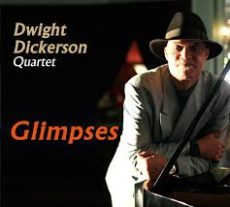
Daily Dose Of Jazz…
Lowell Dwight Dickerson was born in Los Angeles, California on December 26, 1944 and grew up in the city where his influences were Horace Silver, McCoy Tyner, Kenny Barron, and Bud Powell, among others. He became active on the local jazz scene in the 1960s.
In the early Sevenites he appeared on the Chicago, Illinois tenor titan Gene Ammons’ Free Again album on Prestige, and the latter part of the decade found him being featured on a few LPs by baritone saxophonist Nick Brignola. In the 1980s Dickerson started recording as a leader when he provided his debut album, Sooner or Later, for Discovery. In 1992,
Dickerson recorded Dwight’s Rights which features Red Holloway on tenor sax for the small Night Life label. He has played as a sideman in the 1990s with saxman Rickey Woodard, singer Michael Martin and Albert “Tootie” Heath. The early 2000s saw him featured on singer David Coss’ Simple Life album.
Pianist Dwight Dickerson, who occasionally sings and plays a variety of genres ranging from hard bop, funk and soul jazz, to modal post-bop, continues to perform and record at 80.
More Posts: bandleader,history,instrumental,jazz,keyboard,music,piano
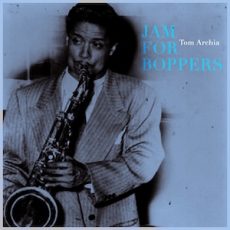
Daily Dose Of Jazz…
Tom Archia was born Ernest Alvin Archia, Jr. on November 26, 1919 in Groveton, Texas, and moved with his family as a child to Rockdale and then Baytown, near Houston, Texas. He played saxophone in the Wheatley High School orchestra. Known during childhood as Sonny, but took the name Tom when he decided that neither his first or middle names were appropriate for a musician.
After graduating from Prairie View A&M University in 1939, he joined Milt Larkin’s band which included Eddie Vinson, Arnett Cobb, and Illinois Jacquet in the reed section and Cedric Haywood as pianist and arranger. 1942 saw Archia arrived in Chicago, Illinois with Larkin for a nine-month residency backing T-Bone Walker at the Rhumboogie Club.
The following year he joined the Roy Eldridge orchestra alongside Ike Quebec, Ted Sturgis, and Doc West that recorded in Chicago for the Brunswick label. He moved to the Rhumboogie Dream Band until mid 1944. Unfortunately he frequently disrupted band discipline and was fired by Marl Young who took over as bandleader.
In 1945 Tom went to Los Angeles, California and joined Howard McGhee’s combo, with Teddy Edwards, among others. Shortly afterwards, he was recording with the brothers Illinois and Russell Jacquet, as well as Helen Humes.
Returning to Chicago in 1946, Archia became a headliner at the Macomba Lounge, recorded extensively for Aristocrat Records during the late Forties, and recorded with Wynonie Harris and Hot Lips Page. He would go on to participate in tenor saxophone duels with Buster Bennett, Gene Ammons, Claude McLin, Hal Singer, Harold Ashby, Porter Kilbert and Lucius Washington.
By the Sixties he was struggling to find gigs and he retired to Houston in 1967, after being temporarily disabled by a broken jaw. After recovering, he played the Houston club circuit for the rest of his life. Tenor saxophonist Tom Archia died on January 16, 1977 at the age of 57.
More Posts: history,instrumental,jazz,music,saxophone
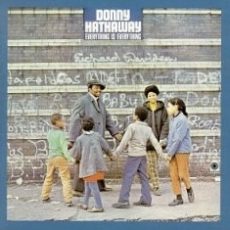
Daily Dose Of Jazz…
Ric Powell was born on August 19, 1942 in New Orleans, Louisiana. He attended and initially studied music at St. Augustine High School in New Orleans, before his family moved to the Bronx, New York where he went to Morris High School. Upon graduating he went on to study at New York School of Music in Manhattan, then in the U.S. Naval School of Music in Washington, D.C. and finally matriculated through Howard University in Washington, D.C.
He beganhis professional life as a member of the youth percussion ensemble Kalypso Kids, then became a member of the Apollo Theatre House Band under the direction of Ruben Philips. He toured with the Jimmy Castor Band before becoming a studio and freelance musician in New York City and Chicago, Illinois.
He formed a trio under his own name featuring Donny Hathaway, became a member of the CBS Staff Orchestra in Chicago, and then a record producer for Atlantic, Atco and Stax. Drummer Ric Powell, who formed Don-Ric Enterprises and is an Adjunct Professor of Percussion at Northwestern University, continues to perform.
More Posts: bandleader,drums,history,instrumental,jazz,music
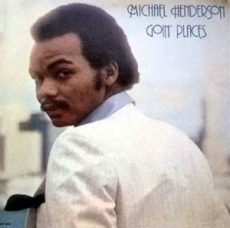
Daily Dose Of Jazz…
Michael Earl Henderson was born on July 7, 1951 in Yazoo City, Mississippi. He moved to Detroit, Michigan with his parents when he was young, his mother, Rose Williams sang in church. During his childhood, he played cello and then switched to bass guitar, teaching himself to play. When he was 10 or 11, he saved enough money to take a bus to see a bill of Motown artists at the Fox Theater. Precociously talented, he was performing with local bands before his 12th birthday.
Beginning his career early around the age of 14, he was on tour with the Detroit Emeralds when he met Stevie Wonder at a Chicago theater. In the dressing room was a piano, Stevie was playing and he sat down next to him with his bass and the meeting was fortuitous. Stevie hired Michael and they toured together for five years while working as a Motown session musician.
In 1970 at the Copacabana in Manhattan, Miles Davis heard him playing with Wonder. At that time Davis was entering his electric and rock rhythms and hired Henderson away. Over the next few years from 1970 to 1977 he recorded a string of albums with Davis, including Bitches Brew, Jack Johnson, Live-Evil, On the Corner, In Concert: Live at Philharmonic Hall, Get Up with It, Agharta, Pangaea, and Dark Magus.
With Norman Connors he invited him to write and record Valentine Love with Jean Carne, We Both Need Each Other with Phyllis Hyman and You Are My Starship. As a solo artist he recorded Take Me I’m Yours, Wide Receiver, and Can’t We Fall in Love Again, again with Hyman.
In 2002 Henderson returned to the music of Miles Davis and with several other Davis alumni, saxophonist Sonny Fortune and drummer Ndugu Chancler, formed the group Children on the Corner. A year later, they released the album Rebirth, which reinterpreted and recreated Davis’s electric music from the 1970s. He remained in the music industry until his death.
Bass guitarist and vocalist Michael Henderson died of cancer on July 19, 2022 at his home in Dallas, Ga., a suburb of Atlanta. He was 71.
More Posts: bandleader,bass,history,instrumental,jazz,music
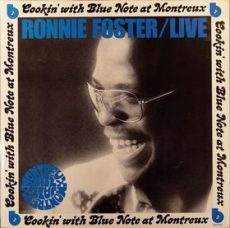
Daily Dose Of Jazz…
Ronnie Foster was born May 12, 1950 in Buffalo, New York and was attracted to music at the age of four. Attending Public School 8, then Woodlawn Jr. High for a year, he took music more seriously from his early teens while at McKinley Vocational High School for two years, and having his first professional gig aged fifteen, playing in a strip club. He spent his final year at Lafayette High School. The only formal musical instruction he received was a month of accordion lessons.
Foster initially performed with other local musicians before moving to New York City with his own band, and acquired a publishing company. He has performed as a sideman with a wide range of musicians, frequently working with guitarist George Benson and playing on the guitarist’s album Breezin’.
He has played organ with Grant Green, Grover Washington, Jr., Stanley Turrentine, Roberta Flack, Earl Klugh, Harvey Mason, Jimmy Smith, and Stevie Wonder. His music Mystic Brew has been sampled by A Tribe Called Quest and J. Cole.
Organist Ronnie Foster, who is also a record producer, continues to perform, record.
More Posts: bandleader,history,instrumental,jazz,music,organ,piano





